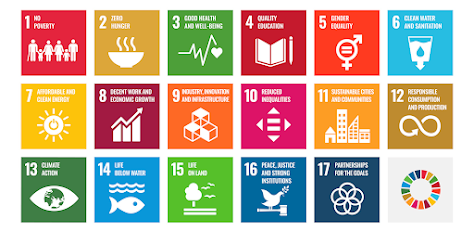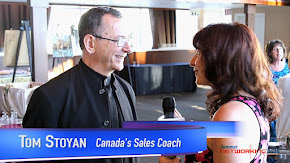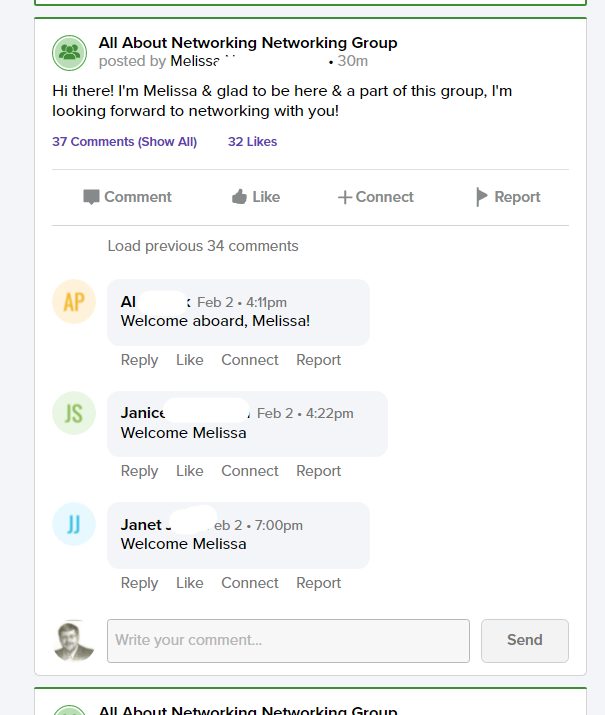Society is reaching a tipping point.
By 2030, we will have decided whether to embrace life on this planet, or death. We will have decided whether we support global growth, peace, equality, freedom, health and education, or a dog-eat-dog world where the "haves" choose to let half the world live in poverty and precarity.
This is a time when leadership will matter in every sphere: business, politics and community. As a leader, you must decide whether you stand with empathy, love and opportunity for all.
2030 is the turning point. 2030 is “The
Year” that the United Nations has targeted for achieving its 17 Sustainable Development Goals (SDGs). It's also the year that countries and organizations are expected to achieve tangible progress in their plans to become carbon-neutral by 2050 - to save life on this planet from accelerated global warming and extreme weather events.
2030 is also the year that the last of the baby boomers reach retirement age - giving businesses and other organizations a chance to reset their leadership visions around more contemporary values such as creativity, collaboration, and serving all stakeholder communities, not just dividend-hungry shareholders.
2030 must be a time when we celebrate the actions we have taken to clean the planet, encourage global growth, and end war, inequality, poverty, hunger and disease.
And as someone reminded me the other day, 2030 is just 400 weeks away.
Now is the time for business leaders to call a fresh start. How can we stop polluting the planet, and make it a better place? How can we evolve from serving customers to enhancing human life?
It’s not just
about climate/sustainability, but building a more just planet.
A number of the UN's SDGs aim straight at business:
* Goal 7: Affordable and clean energy
* Goal 8: Promote sustained, inclusive and sustainable
economic growth, full and productive employment and decent work for all.
* Goal 9: Build resilient infrastructure, promote inclusive
and sustainable industrialization and foster innovation.
* Goal 11: Sustainable cities and communities
* Goal 12: Ensure sustainable consumption and production
patterns.
From now on, every decision you make should be looked at through the lens of 2030. Are you contributing to a cleaner, freer, more prosperous world? Or are you just acting in your own self-interest?
Because organizations that serve only themselves will increasingly be shunned.
A recent “HumanKind Study” study by marketing firm Leo
Burnett uncovered profound disconnects. In a poll of 4,633 Canadians, the study found that half of respondents are concerned they are “wasting their life” doing “unfulfilling work.” A full 76% of Canadian
consumers said they don’t believe brands understand their problems.
Tahir Ahmad, Burnett Canada’s chief strategy officer, says
employers and brands need to address these disconnects. We must find “a way
forward that focuses not solely on profit or product, but on people, and how we
can lead more fulfilling lives.”
PwC found similar disconnects in its
2021 Global Culture Survey. For instance, 63% of Canadian business leaders say their
organizations have developed a distinctive culture that sets them apart from their competitors – but only 41% of employees share
their belief.
Compared to American workers, the survey
found Canadians have much higher doubts about their employer’s ability to adapt to change, set a positive “tone from the top,” or “act as role models for their
organization’s purpose, values and culture.”
Companies that choose not to prioritize ecosystem interests, including the SDGs, will increasingly be seen as problems in a world desperate for solutions. Which side will you be on?
Now is the time for
leadership. Executives must develop clear plans for their
organizations, and for their employees, products, and customer relationships.
They need to reconnect with their communities (not just “stakeholders”). As PwC
reports, Canadians “want to see their leaders setting a clear path
towards building trust by giving their people a shared sense of purpose, while
also making sure they feel valued, connected and visibly supported.”
For business leaders, 2030 is a global target date for achieving more human-centred
workplaces, more responsible production and consumption processes, and more sustainable
and inclusive growth. That means more innovation (in products, services, and
business methods), "decent work," and partnering with other
companies, around the world, to create more win-win relationships.
Consider Tesla, which became the world's most valuable automaker simply because it saw the need for green energy sooner than its more established competitors around the world.
This is a manifesto
for a new way of doing business – and new ways of thinking about business. Redefining relationships with shareholders,
employees, customers and communities. Finding cost-effective energy solutions, decoupling growth from environmental
degradation, providing productive employment for all, building
better cities, and uplifting marginalized communities so all can share in the bounty of this planet.
The Government of
Canada puts its 2030 mission this way:
“Leave no one behind.”
As the boomers' "greed is good" mentality fades from the boardroom, what values will replace it? How will your business get ahead of this transition? How can you find, attract and motivate new leaders who understand
these transformative times and your changing customer base?
2030 is not just a deadline –
it’s a once-in-a-generation opportunity.
By embracing change now,
organizations will be in better shape to lead this transformation, become role
models, and take advantage of all the new opportunities, relationships and
regulations that will emerge as we move closer to 2030.
2030 is not not just about the SDGs. It's about choosing community over self, long-term thinking over short-term, stakeholder rights rather than shareholders' rights, and prioritizing human need over greed.
And it starts with us all, right now.








